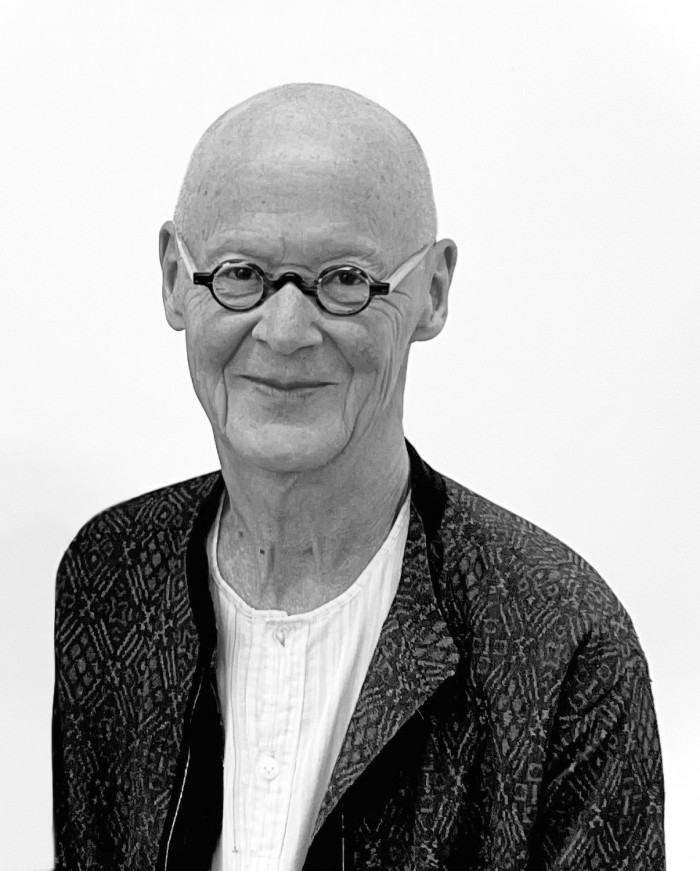Wolfgang Laib
Sculpture and Installation
Wolfgang Laib
Sculpture and Installation

Wolfgang Laib’s quiet, meditative work makes him one of the most fascinating artists of our time.
Taking the artist’s choice of materials for his sculptures and installations alone — rice, pollen, beeswax, milk – his work stands out as very unusual and in a unique artistic position within contemporary art.
Laib started out studying medicine in 1968. In 1972, amid his medical studies, he began to work on an egg-shaped stone sculpture called Brahmanda. Translated from Sanskrit, the title means “Egg of the Universe”. At this moment, Laib made the decision to finish his medical studies but with the full intention of embarking on a career as an artist. Shortly thereafter, Wolfgang Laib created his first Milkstone. Closely aligned in shape to a square, the Milkstones are slabs of pure white polished marble, the centre of the surface at the top carved out and sanded down to create a most subtle depression. This the artist fills with milk, thus unifying the ephemerality of milk with the solid density of white marble.
In 1977, Laib began to collect pollen from hazelnut, dandelion and pine trees in the meadows and forests around the vicinity of his village in southern Germany. These key works of Laib’s have been exhibited in museums worldwide. New York’s Museum of Modern Art presented the largest pollen installation of the artist to date, measuring around 5,5 x 6,5 meters (18 x 21 feet).
Cyclicality typifies the artistic work of Wolfgang Laib, a quality that applies to the pollen works, the Milkstones, but also to the works in the series entitled “Rice House”, which the artist began making in 1984, or the works made of beeswax.
Wolfgang Laib’s approach is remarkable for its merging of Western minimalist art currents and a spirituality sustained by his interests in Eastern – particularly Indian – philosophy, aesthetics and religion. He also has a strong connection with nature. Laib is interested in elementary forms that link together the most diverse cultures as well as exploring form and material as conveyors of archaic knowledge. Forging a singular path for more than 30 years, Laib amplifies the intrinsic materials and processes found in nature.
Wolfgang Laib represented Germany at the Venice Biennale in 1982 (together with Gotthard Graubner and Hanne Darboven). He was invited to show at documenta in 1982 and 1987. His most notable solo exhibitions include those at the Hirshhorn Museum and Sculpture Garden in Washington, DC (2000); Dallas Museum of Art (2001); Haus der Kunst in Munich (2002); Fondation Beyeler in Basel (2005), MMK Museum für Moderne Kunst in Frankfurt (2010) and the Museum of Modern Art in New York (2013). A permanent wax room is installed at The Phillips Collection in Washington, DC, at Anselm Kiefer’s estate in Barjac in southern of France, and in Marcevol in the French Pyrenees. Wolfgang Laib was awarded the Praemium Imperiale art prize in 2015.
Works by the artist are represented in numerous public collections, including the Centre Pompidou in Paris; the Kunsthaus in Zurich; the Museum of Modern Art in New York; the Neue Pinakothek in Munich, Hirshhorn Museum and Sculpture Garden in Washington, DC, the Kunstmuseum in Stuttgart and the Sprengel Museum in Hannover and many more.
Born in Metzingen, Germany, in 1950, the artist lives and works in southern Germany and in his studio in South India.
The Buchmann Gallery has presented the artist’s work in 18 solo exhibitions up to 2022, since the collaboration began in Switzerland in 1987 and in parallel in Germany as well since 1995.
Further insights into the artist's work can be found in the catalogue Wolfgang Laib, The Beginning of Something Else, Kunstmuseum Stuttgart, Hirmer Verlag, 2023.